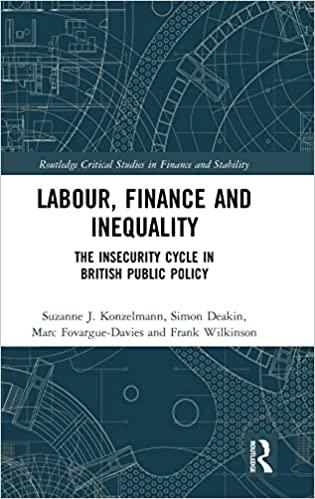Question
Chapter 5 1. Hedging with Currency Options When would a U.S. firm consider purchasing a call option on Canadian dollars for hedging? When would a
Chapter 5
1. Hedging with Currency Options When would a U.S. firm consider purchasing a call option on Canadian dollars for hedging? When would a U.S. firm consider purchasing a put option on Canadian dollars for hedging? (1 point)
2. Speculating with Currency Options When should a speculator purchase a call option on euros? When should a speculator purchase a put option on euros? (1 point)
3. Speculating with Currency Call Options Randy Rudecki purchased a call option on British pounds for $.02 per unit. The strike price was $1.12, and the spot rate at the time the option was exercised was $1.15. Assume there are 31,250 units in a British pound option. What was Randys net profit on this option? (Hint: first calculate the net profit per unit, then multiply net profit per unit by number of units) (1 point)
4. Speculating with Currency Put Options Alice Duever purchased a put option on British pounds for $.03 per unit. The strike price was $1.16, and the spot rate at the time the pound option was exercised was $1.15. Assume there are 31,250 units in a British pound option. What was Alices net profit on the option? (1 point)
5. Selling Currency Call Options Mike Suerth sold a call option on Canadian dollars for $.02 per unit. The strike price was $.69, and the spot rate at the time the option was exercised was $.67. Assume Mike did not obtain Canadian dollars until the option was exercised. Also assume that there are 50,000 units in a Canadian dollar option. What was Mikes net profit on the call option? (1 point)
6. Selling Currency Put Options Brian Tull sold a put option on Canadian dollars for $.03 per unit. The strike price was $.73, and the spot rate at the time the option was exercised was $.71. Assume Brian immediately sold off the Canadian dollars received when the option was exercised. Also assume that there are 50,000 units in a Canadian dollar option. What was Brians net profit on the put option? (1 point)
7. Hedging with Currency Derivatives A U.S. professional football team plans to play an exhibition game in the United Kingdom next year. Assume that all expenses will be paid by the British government, and that the team will receive a check of 1 million pounds. The team anticipates that the pound will depreciate substantially by the scheduled date of the game. In addition, the National Football League must approve the deal, and approval (or disapproval) will not occur for 3 months. How can the team hedge its position? What is there to lose by waiting 3 months to see if the exhibition game is approved before hedging? (1 point)
Chapter 7
1. Locational Arbitrage Assume the following information: South Bank North Bank Ask price of New Zealand dollar $.725 $.732 Bid price of New Zealand dollar $.722 $.728 Given this information, is locational arbitrage possible? If so, explain the steps involved in locational arbitrage, and compute the profit from this arbitrage if you had $1 million to use. What market forces would occur to eliminate any further possibilities of locational arbitrage? (1 point)
2. Triangular Arbitrage Assume the following information: Quoted Price Value of British pound in U.S. dollar $1.30 Value of New Zealand dollar in U.S. dollar $.65 Value of British pound in New Zealand dollar NZ$1.98 Given this information, is triangular arbitrage possible? If so, explain the steps that would reflect triangular arbitrage, and compute the profit from this arbitrage if you had $1 million to use. What market forces would occur to eliminate any further possibilities of triangular arbitrage? (1 point)
3. Covered Interest Arbitrage Assume the following information: Spot rate of British pound $1.25 90-day forward rate of British pound $1.22 90-day British interest rate 5.0% 90-day U.S. interest rate 2.0% Given this information, what would be the yield (percentage return) to a U.S. investor who used covered interest arbitrage? (Assume the investor invests $1 million.) What market forces would occur to eliminate any further possibilities of covered interest arbitrage? (1 point)
Step by Step Solution
There are 3 Steps involved in it
Step: 1

Get Instant Access to Expert-Tailored Solutions
See step-by-step solutions with expert insights and AI powered tools for academic success
Step: 2

Step: 3

Ace Your Homework with AI
Get the answers you need in no time with our AI-driven, step-by-step assistance
Get Started


